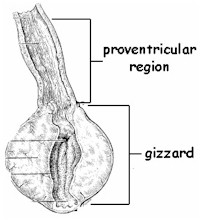Peyer’s patches (aggregated lymphoid nodules)
Peyer’s patches (or aggregated lymphoid nodules) are organized lymphoid follicles, named after the 17th-century Swiss anatomist Johann Conrad Peyer. They are an important part of gut associated lymphoid tissue usually found in humans in the lowest portio
Liver sinusoidal endothelial cells (LSECs) AKA the hepatic sinusoids
They form the lining of the smallest blood vessels in the liver
G cells or gastrin cells secrete gastrin. They works in conjunction with gastric chief cells and parietal cells. The peptide hormone bombesin also stimulates gastrin from G cells.
In anatomy, the G cell or gastrin cell, is a type of cell in the stomach and duodenum that secretes gastrin. It works in conjunction with gastric chief cells and parietal cells. G cells are found deep within the pyloric glands of the stomach antrum, and occasionally in the pancreas and
Physiology of the gastrointestinal system
of the intestinal UPPER GI TRACT
Pulmonary neuroendocrine cells
Neuroendocrine cells are cells that receive neuronal input (through neurotransmitters released by nerve cells or neurosecretory cells) and, as a consequence of this input, release messenger molecules (hormones) into the blood. In this way they bring about an integration between the nervous syste
Enterochromaffin (EC) cells aka Kulchitsky cells
Enterochromaffin (EC) cells (also known as Kulchitsky cells) are a type of enteroendocrine cell, and neuroendocrine cell. They reside alongside the epithelium lining the lumen of the digestive tract and play a crucial role in gastrointestinal regulation, particularly in
Neuromedin B
Neuromedin B (NMB) is a bombesin-related peptide in mammals. It was originally purified from pig spinal cord, and later shown to be present in human central nervous system and gastrointestinal tract. Sequence The sequence of the C-terminal decapeptide is highly conserved across mammalian spec
Bombesin (and a wee bit of ranatensin)
Bombesin is a 14-amino acid peptide originally isolated from the skin of the European fire-bellied toad (Bombina bombina) by Vittorio Erspamer et al. and named after its source. It has two known homologs in mammals called neuromedin B and gastrin-releasing peptide. It stimulates g
The lactating birds and the bees (gastrin, pepsin, etc)
Crop milk is a secretion from the lining of the crop of parent birds that is regurgitated to young birds. It is found among all pigeons and doves where it is referred to as pigeon milk. An analog to crop milk is also secreted from the esophagus of flamingos and the male emperor penguin. D
Digestive enzymes
Digestive enzymes are a group of enzymes that break down polymeric macromolecules into their smaller building blocks, in order to facilitate their absorption into the cells of the body. Digestive enzymes are found in the digestive tracts of animals (including humans) and in
Tetragastrin is commonly used in scientific research to induce panic attacks
CCK-4 reliably causes severe anxiety symptoms when administered to humans in a dose of as little as 50μg
A tetrapeptide is a peptide, classified as an oligopeptide, since it only consists of four amino acids
Examples of tetrapeptides are: See also Hormones Categories: From Wikipedia where this page was last updated July 2, 2022
Somatostatin
Not to be confused with Somatocrinin or Somatomedin. Somatostatin, also known as growth hormone-inhibiting hormone (GHIH) or by several other names, is a peptide hormone that regulates the endocrine system and affects neurotransmission and cell proliferation via interaction with G pro









